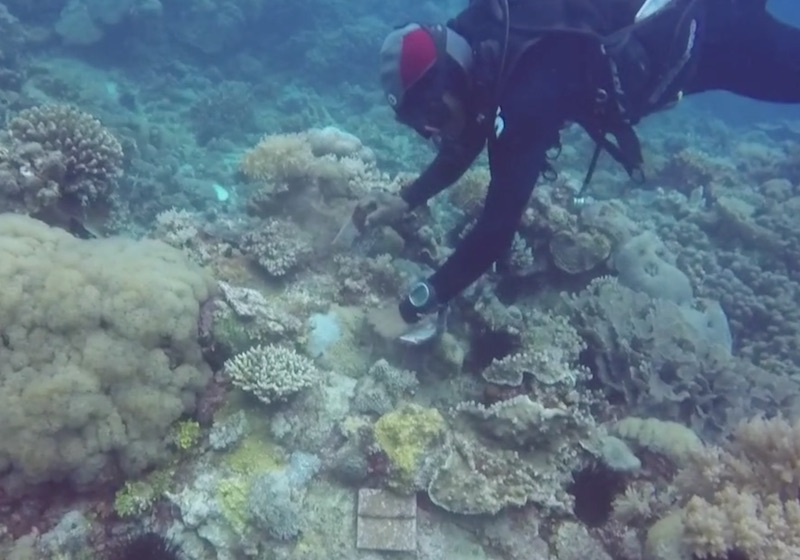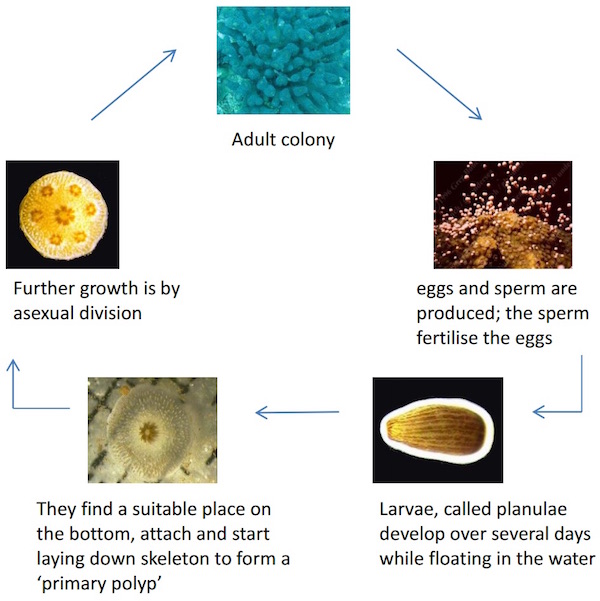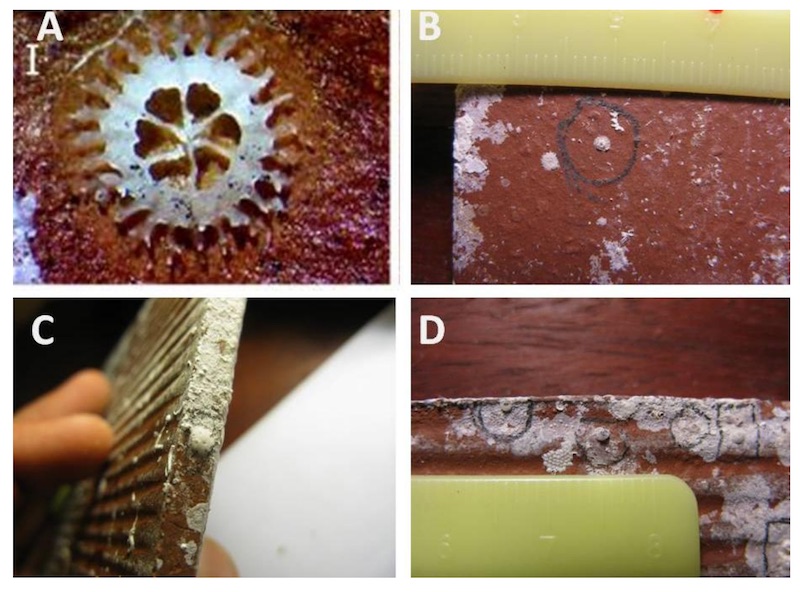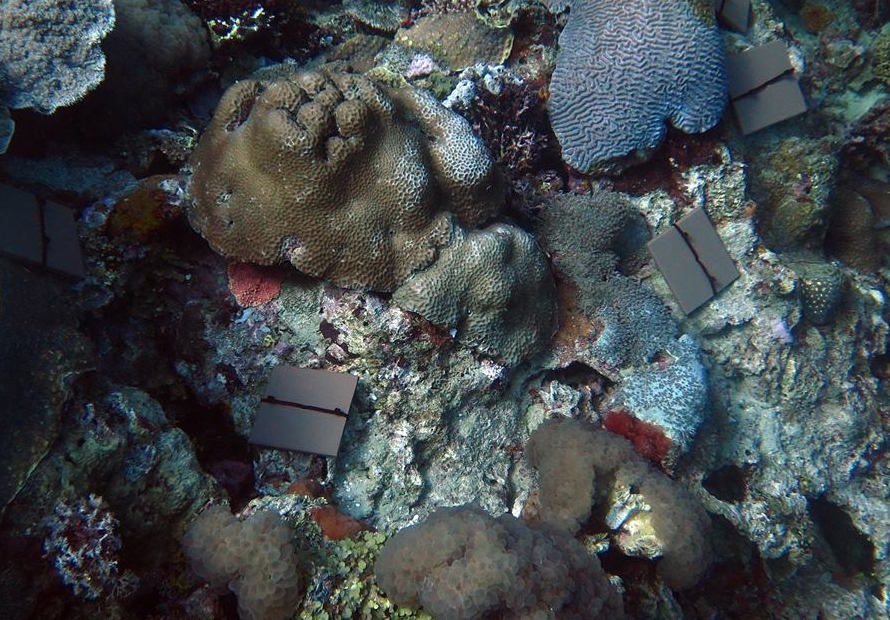Coral Settlement Project
Corals are fascinating animals which can reproduce sexually through spawning and asexually through fragmentation. In Mozambique scientist are studying coral spawning and, in particular, where these tiny coral larvae settle onto the reef to gain insight into the long-term health of coral reefs.
Coral spawning and the recruitment of coral larvae is an important indicator as to whether or not the reef will be viable in the long-term. How many corals settle and survive into adult colonies can help determine if the coral reefs are in decline or will continue to thrive.

If a reef has an abundance of adult colonies but is not receiving new baby corals it is likely to decline over time. Reefs with a higher settlement rate are predicted to continue growing.
When corals spawn, eggs and sperm meet to form a gamete (fertilized egg) which grows into tiny coral larvae. These larvae can drift in the current settling on a different reef from where they originated, or they can settle close to the parent colony. Once established, the larvae will metamorphose into a single coral polyp which continues to grow into a coral colony.

The connectivity (the distance each larva travels) between reefs is important for genetic diversity. Corals with mixed genetics can be resilient to environmental threats like climate change and genetic diversity can safeguard against diseases which could wipe-out large areas of reef.
Dr. David Glassom from the University of Kwazulu-Natal studies coral settlement and coral spawning in Mozambique. With the help of NGO’s, Scientists and Dive Lodges Dr. Glassom created the Coral Settlement Project in 2016.

(C) and bottom (D) surfaces of tiles. Circling each with a pencil helps to count them precisely.
Settlement Tiles
To study coral settlement, teams at eight sites in Mozambique deploy rough unglazed ceramic tiles on the reef in the hopes that baby corals will settle. After 12 weeks, the tiles are removed from the ocean and bleached to remove the soft tissue and biofouling organisms to expose the microscopic coral skeleton.
Each coral species has a distinct skeleton which can determine its species from a single polyp stage. The single polyp skeletons are 1-2mm across, and the use of a microscope or magnifying glass will help identify each species.

The Coral Settlement Project in Mozambique examines recruitment on eight sites on the Mozambique coast, from Ponta Do Ouro in the south to the northern province of Cabo Delgado. Settlements patterns are then compared between reefs and between latitudes. However, it is still too early in the study to draw conclusions from the results.
Where To Settle
It is important the larvae find the right conditions to settle, or the larvae will be unable to grow into a new coral. Coral larvae prefer pink and white, the color of coralline algae, and a healthy reef. Tiny larvae have the ability to swim short distances to find a suitable habitat; however, on degraded reefs, they may never find a home.
On degraded reefs, corals and rocks are often overgrown by algae and the substrate could be silty or mucky. When this happens baby corals may never find a suitable place to settle and, even if they do, the newly settles coral can be quickly overgrown by algae.
By measuring settlement rates on a reef, one can start to determine the overall health and ability for a reef to regenerate. Reefs with a higher settlement rate and greater connectivity signal a healthy resilient reef.
We are curious to see the results of this study, and we will follow up when more information is provided in a few months time.
The Coral Settlement Project would not be possible without: The marine biology research station on Inhaca Island (EBMI), which is part of Eduardo Mondlane University, Lurio University in Pemba, Nuarro lodge, the Zavora marine lab and Gozo Azul diving in Ponta do Ouro. There are a whole lot of individuals and other dive operations that have helped in different ways, but too many to mention.


